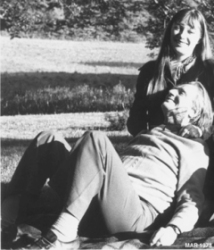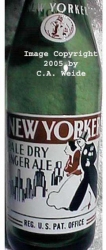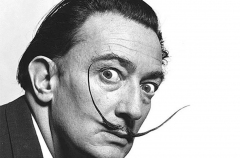
René Jules Lalique (1860–1945)
René Jules Lalique is born on April 6,1860, in the village of Ay, in the Champagne region of France. Two years later, his father, a Parisian mercantile agent, moves his family to a suburb of Paris. They return to Ay for summer holidays, and Lalique will have a lifelong attachment to his native countryside.
1878: Moves to London to continue his studies. Two years are spent in London, where he attends the Sydenham College located in the Crystal Palace. In the freedom of his new environment, Lalique cultivates his graphic design skills, and develops a unique and naturalistic style that would later become his trademark as a jeweler.
1880: Returns to Paris after studying in London for two years. Lalique works as an illustrator of jewelry for one of his relatives, M. Vuilleret, on rue de Santonage. He also begins to work as a freelance jewelry designer.
1882: Continues independent jewelry design and illustration work. In time, he is creating designs for Aucoc, Boucheron, Cartier, Destape, Gariod, Hamelin, Jacta, and others.
1884: Works for two years in partnership with Varenne, who placed his drawings with jewelry manufacturers; these bore the trade stamp Lalique & Varenne, 84, rue de Vaugirard.
Lalique drawings are displayed at the National Exhibition of Industrial Arts, organized at the Louvre on the occasion of the presentation of the Crown jewels in the Salle des Etats.
1885: At the end of the year, he takes over Jules Destapes' jewelry workshop on Place Gaillon. Here he is able to concentrate on the innovative jewelry for which he was becoming well-known. During this time he makes an increasing use of novel and inexpensive materials in his creations, including translucent enamels, semiprecious stones, ivory and hard stones.
1886: Marriage to Marie-Louise Lambert. A daughter, Georgette, born of this first marriage, met a premature death on December 12, 1910.
1889: At the Universal Exhibition in Paris, the prestigious jewelry firms of Vever and Boucheron include collaborative works by Lalique (anonymously) in their displays.
Lalique begins to incorporate glass into his jewelry in the form of cast pates-de-verre.
1893: Lalique takes part in a competition organized by the Union Centrale des Arts Décoratifs on the theme of a drinking vessel. He wins the second prize of 500 francs for his Thistle flowers goblet, and is awarded a medal with special mention for his Satyr and vine shoots mug.
1894: Exhibits for the first time at the Salon de la Société des Artistes Français where he would remain a regular participant until 1911.
Lalique begins to design stage jewelry for the famous actress Sarah Bernhardt. He also creates pieces for Siegfried Bing's Maison de l'Art Nouveau, the Paris shop that gave its name to the Art Nouveau movement.
1897: Lalique wins first prize at the Universal Exhibition in Brussels and is awarded the Legion of Honor's Croix de Chevalier.
1900: Universal Exhibition in Paris, Lalique display creates a sensation. René Lalique is hailed as founder and leader of a new school of modern jewelry design.
Lalique becomes an officer of the Legion of Honor.
Augustine-Alice Ledru gives birth to a second child, Marc, on September 1.
1902: International Exhibition of Decorative Arts in Turin, Italy.
1903: First participation at the Salon d'Automne where he would exhibit regularly until 1935.
1904: Exhibits with success in the United States, at the St. Louis World's Fair.
1905: Opening of the first retail shop at 24, place Vendôme, near the retail shop of François Coty.
Decorative Arts Exhibition in Liège.
1908: One year before, François Coty commissions Lalique to design his perfume labels. In time, Lalique creates his first perfume bottles for François Coty. The teamwork of these two would eventually revolutionize the perfume industry, by presenting fine perfumes in attractive containers at affordable prices.
He rents the Combs-la-Ville glassworks.
"Women's Precious Jewelry Sets" exhibition at the Musée Galliéria.
1909: Lalique continues to experiment with glass manufacturing techniques, applying technology from French wine and pharmaceutical industries. First patent application concerning large-run glass production techniques is submitted.
Death of wife Augustine-Alice Lalique-Ledru.
1911: International Exhibition of Decorative Arts in Turin, Italy.
Lalique exhibits for the first time at the Salon de la Société Nationale des Beaux-Arts.
The first Lalique show devoted entirely to glass, held at 24, place Vendôme.
Collaborates on the design for the François Coty boutique in New York. The Lalique-designed windows can still be seen today, at 712 Fifth Avenue in New York (now the Henri Bendel store).
1918: During World War I, the factory at Combs-la-Ville is forced to close. Due to rapid growth, the design and construction of a new factory is begun in Wingen-sur-Moder, in the Alsace region. In 1921 it is completed, and remains the factory that produces Lalique crystal today.
1921: Works on the interior decoration of the French ocean liner Paris. He later works on the liners De Grasse, Ile-de-France, and Normandie, as well as on the interiors of luxury trains such as Compagnie des Wagons-Lits (which later became the Orient Express), designing chandeliers and lighting panels.
1925: Designs the interior of the Sevres Pavilion at the 1925 Exposition Internationale des Arts Decoratifs et Industriels Modernes in Paris. At this exhibition the term "Art Deco" is derived.
International Exhibition of Modern Decorative and Industrial Arts in Paris. Lalique's glass pavilion, which includes a monumental fountain entitled "The Springs of France", is pivotal in establishing the Art Deco style.
Birth of a son, Jean Raymond, to Lalique and Marie Anère on March 30. Two years later, Lalique and Marie Anère will have their second child, Renée Jeanne Georgette.
Designs first car mascot (bouchons de radiateur) for Citroën, the French automobile company. For the next six years, Lalique would design 27 models for companies such as Bentley, Bugatti, Delage, Hispano-Suiza, Rolls Royce, and Voisin.
1926: Windows of the Saint-Niçoise church in Reims.
Decoration of the new Worth store in Cannes.
The Lido shopping arcade on the Champs-Elysées.
Begins manufacturing the luxuriously satin-finished vases, bowls, and statuettes which have become synonymous with the Lalique name.
1932: The fountains for the Rond-Point des Champs-Elysées.
Main doors to the salon of Prince Asaka Yasuhiko's palace in Tokyo.
1935: New boutique opens September 6, on rue Royale. This boutique continues to serve as the main Lalique showroom today.
1939: World War II begins. Despite the Wingen factory's financial and artistic success, the onset of the War forces its closure. It remains occupied by the Germans for six years until the end of the War.
1945: Death of René Lalique on May 5, at the age of 85.
Thanks to Lalique.com.




.png)